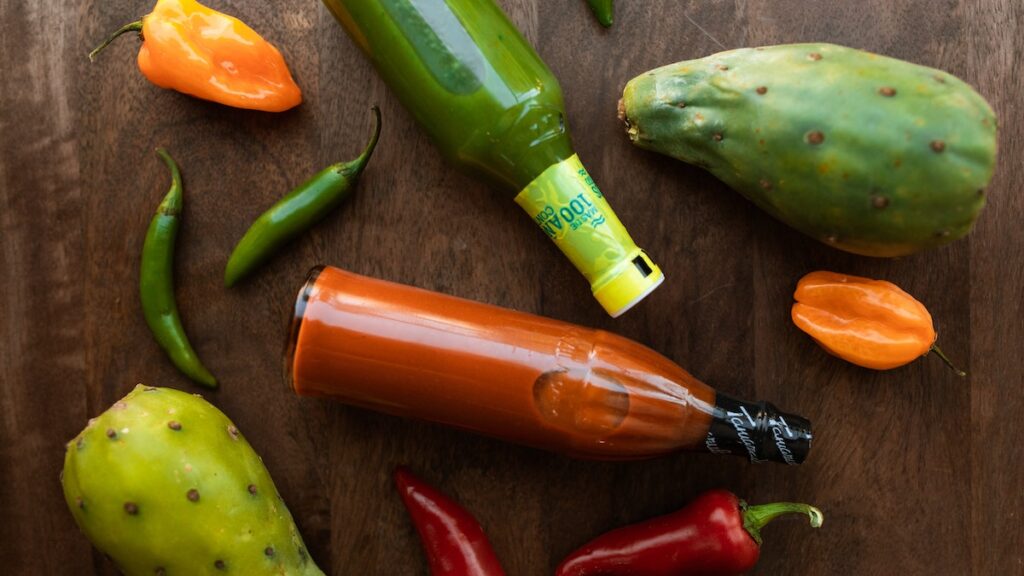The orange fruit is the ‘king’ of vitamin C and an essential part of our diet.
Oranges are susceptible to various conditions that may make us question their edibility, including the spots on their skins caused by different factors.
One of the common questions among orange lovers is, “Are brown spots on oranges safe to eat?”
Yes, brown spots on oranges are safe to eat. Although the fruits may look unappealing, the inner parts are unaffected. Hence, you only need to remove the affected areas and consume the rest.
However, if the spotted fruits have a slimy texture or foul smell, they may have gone bad. This article addresses this question comprehensively to help you know how to deal with your brown spotted oranges.
Let’s dive in.
What Are Brown Spots on Oranges?
Brown spots on oranges are fungal infections induced by Alternaria alternata. The fungus causes brights, rots, leaf spots, and other diseases on various plant parts. Hence, the small brown spots are common in the citrus family to which oranges belong.
Citrus rust mites are also another common cause of brown spots on oranges. They’re tiny pets that feed on the fruit’s skin, resulting in black or brown spots. A bacterial infection (blackspot disease) may be the cause in other cases. However, such cases are rare.
Brown spots occur on the orange peel or inside, in various sizes and shapes, and may appear flat or raised. Although they look unappetizing, the spot-bearing fruits are safe to eat. The fruit disorder only affects the infected area(s), which you can cut and enjoy the rest.
What Are the Symptoms of Brown Spots on Oranges?
The fungal orange tree disease appears as light brown or dark brown spots. They cover a small part of the fruit or almost the whole fruit. There may be signs of mold development on the spots as the infection progresses, and the fruit eventually drops.
Additionally, you may observe twig and leaf dieback and spots with sticky ooze.
Alternaria alternata, a member of Phytophthora species, inhibits the soil around the tree, especially when wet or during heavy rains.
It attacks the fruits through rain splashes or irrigation spraying.
Are Brown Spots on Oranges Safe to Eat?
Yes, oranges with brown spots are safe to eat. The spotted segments may be less firm and have an altered flavor. Also, they may have a sour smell, indicating the likelihood of going bad.
The fungal infection only affects the invaded area; remove and eat the other section.
When Should I Discard an Orange with Brown Spots?
You should discard an orange with brown spots if it has a slimy texture or foul smell. It may have gone bad. Also, the other signs of non-edibility are when the orange is mushy or has leaking juice. Don’t consume such!
How Do I Treat Brown Spots on Oranges?
You can treat brown spots on oranges by applying copper, phosphonate, and phenylamide fungicides.
Here’s how.
Copper Fungicide
- Prune the tree 24 inches or more from the ground.
- Spray the fungicide immediately after the first rain — between October and December — to protect during the wet season.
- Repeat the procedure when the rain intensifies: January or February.
- Spray the tree skirts approximately 4 feet from the ground.
Also, spray copper fungicide on the ground under the orange tree.
Phosphonate Fungicide
Use phosphonate fungicide as foliar and soil or fruit treatment. However, the foliage application is extremely slow.
Hence, the phosphite that reaches the soil is restrained from reaching the water tables.
Fungicide is only effective when it enters the orange tree’s water transport system.
Phenylamide Fungicide
Apply phenylamides as soil treatment for brown spots on your oranges.
Expert tips:
- Check application rates, timing, and maximum number from the manufacturer’s recommendation.
- Use the fungicide preventively: It’s hazardous during the disease’s early stage.
- Confine the phenylamide’s use to the fastest-growing stages of your orange plants to optimize systematic activity.
- Avoid using phenylamide for foliar treatment in glasshouses to prevent resistance.
General tips to apply when controlling brown spots on oranges:
- Remove the damaged fruits and leaves and dispose of them correctly.
- Keep the orange tree’s surroundings clean, free from dropped fruits and leaves
- Prune the tree’s lower branches for at least 4 feet from above the ground.
- Repeat the spraying in the nest spring to prevent re-infection.
- Follow the manufacturer’s instructions when spaying your plants.
What Are the Other Types of Spots That Affect Oranges?
In addition to brown spots, other spots affect oranges, including the following:
Black Spots
The fungal infection Guignardia citricarpa, is the cause of citrus black spots. It reduces the quality and quantity of the fruits a tree produces. It affects all citrus fruits.
Symptoms:
- Black rot on the fruits and leaves.
- Black spots are decrypting or oozing in advanced stages.
Treatment:
- Spraying copper fungicide.
Greasy Spots
The wind-spread fungal disease thrives during wet seasons, where wetness saturates decomposing leaves for long. Rain and wind spread the fungus into the tree, infecting the leaves and fruits.
Symptoms:
- Yellow-spotted leaves that eventually turn into brown blisters.
- Black, greasy-looking lesions on the fruits.
Treatment:
- Valet, copper, and foliar micronutrients.
Bacterial Spots
Your orange plant’s leaves and fruits are the victims of attack by bacterial spot disease. The disease has similar symptoms as citrus canker and occurs during the plant’s early stages in three classifications:
- Weakly aggressive
- Moderately aggressive
- Aggressive
However, the fruit infection is rare. Also, premature fruits and leaves fall, rendering citrus trees unproductive.
Symptoms:
- Young fruits and leaves drop
- Yellow spots on the leaves
Treatment:
- Pruning and copper fungicide application
Pseudocercospora Spots
Also known as Angular Leaf Spots, the fruit and leaf spots result from the fungus Pseudocercospora angolensis. Moisture is the main propagator of the disease, and wind and mechanical (transportation or pruning) factors enhance its spreading.
Symptoms:
- Flat, light brown to red lesions with gray centers on the oranges.
- Yellowing of the spotted parts of the leaves.
Treatment:
- Fungicide application.
Anthracnose Spots
The fungal infection forms round, flat, dark spots with a purple outline. It grows on decaying wood in the canopy of orange trees, infecting young oranges and new plants. The fungus can travel short distances by waterhead watering and rain.
Symptoms:
- Premature twig dieback
- Early leaf drop
- Fruit dark staining
- Post-harvest fruit decay
Dark fungal spores cover rotten twigs and leaves, spreading the pathogens.
Treatment:
- Azoxystrobin fungicide application
- Spraying inc sulfate, copper sulfate, and hydrated lime
How Do I Tell if an Orange Is Bad?
You can tell if an orange is bad in four ways, including the following:
- Observing its appearance
- Squeezing gently
- Tasting
- Smelling
Observing Appearance
Ripe oranges have bright orange skins. If you see brown discoloration or mushy spots, it signifies rotten oranges. The skin of the fruits may start shrinking, indicating that your oranges are bad.
However, small scars on the surface of the fruit aren’t rotting. They result from scraps from tree branches. Such aren’t an issue if they don’t cut the fruit open.
Check out for white mold on the fruit, which could develop into decay. You might also notice green mold growing on orange slices. Molds are signs that your oranges are going bad.
Squeezing Gently
Give your oranges a gentle squeeze to check their firmness. The fruits are bad if they have soft, mushy spots. Orange juice starts oozing, and mold grows on the spots if the rotting is extended.
Also, tight, dry skin indicates the skin is drying out. The oranges may appear shriveled. Being gummy, rubbery, sticky, or other strange textures are signs of spoilage.
If you inspect an orange and are unsure about its edibility, discard it!
Tasting
There are various types of oranges, including cara cara, mandarin, navel, valencia, and blood oranges.
Common among them is a refreshing taste, especially when cold and adequately juicy. If your fruits taste otherwise, they may be unsafe to eat.
Here are a few tasting guidelines:
- Cut a small section of your orange away from the spots.
- Smell the piece. Fresh oranges have a pleasant citric smell, while bad ones are sour.
- Bite a small piece if the smell is good. A bad orange has a bitter and sour flavor.
Smelling
Fresh fruits have a sweet citric smell. Hence, your fruits have gone bad if they have a moldy or filthy smell. Molds may also accompany the unpleasant smell.
Wrap-up
Brown spots on oranges are harmless if the fruit has no sour smell or juice oozing. Despite having an unappetizing appearance, the fruit’s inner parts are edible. So, all you need is to cut the affected area and eat the rest.
The common symptoms of the brown spot infection include light and dark brown spots covering the whole oranges or a section of the fruits. Other signs may be mold growth on the spots and fruit drop. Additionally, twigs and leaves dieback may happen while the spots have a sticky ooze.
You can examine your oranges through smell, taste, appearance, or feel if you doubt their edibility.



